The beneficial re-use of dredged material
In this fact sheet the focus is on working-with-nature solutions for the beneficial re-use of dredged material. A working-with-nature solution for the beneficial reuse of sediment is a solution whereby the sediment or dredged material is used locally, preferable in the system, and use is made of natural processes to distribute the sediment (tides, waves etc.) or to trap additional sediment (reed, oysters etc).
|
Thema |
Waterveiligheid, Het kustsysteem |
|
Tags |
B&O waterkeringen B&O watersystemen primaire keringen regionale keringen |
|
Downloads |
- INTRODUCTION
- RELATED TOPICS AND DELTA FACTS
- STRATEGY: WORKING WITH NATURE
- SCHEMATIC
- TECHNICAL CHARACTERISTICS
- GOVERNANCE
- COSTS AND BENEFITS
- LESSONS LEARNED AND ONGOING STUDY
- KNOWLEDGE GAPS
- EXPERIENCES
Introduction
Sedimentation is an essential, integral and dynamic substance of our river basins. Sediment is derived from the weathering and erosion of minerals, organic material and soils in upstream areas and from the erosion of river banks and other in-stream sources. In estuaries, sediment transport occurs both downstream and upstream, mixing fluvial and marine sediment as a result of tidal currents. Sediment forms a variety of habitats and therefore many aquatic species live in the sediment. Sediment is also a resource for human needs. For millennia, mankind has utilized sediments in river systems as fertile farmland and as a source of construction material (SedNet, 2004).
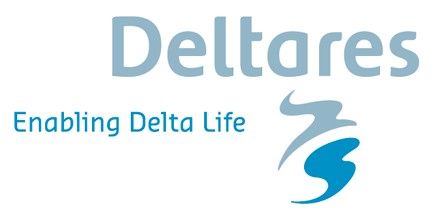

Dredging is essential for maintenance and development of waterways and harbors. Dredging is also necessary for navigation, remediation and flood protection. Dredging of waterways and harbors creates large volumes of dredged material. Europe-wide, the volume of dredged material is very roughly estimated at 200 million cubic meters per year. This material can be a valuable resource. Coarse material is already widely used as a resource for construction, but also soft material can be re-used in a cost-effective manner. Instead of focusing on how to deal with the dredged material as a local end-of-pipe waste problem we can search for solutions whereby sediment is an opportunity. Especially when sediment can stay in the system transport costs will be reduced, therefore it can prove to be a low-cost resource. (SedNet, 2004; PIANC, 2009; Murray, 2008).
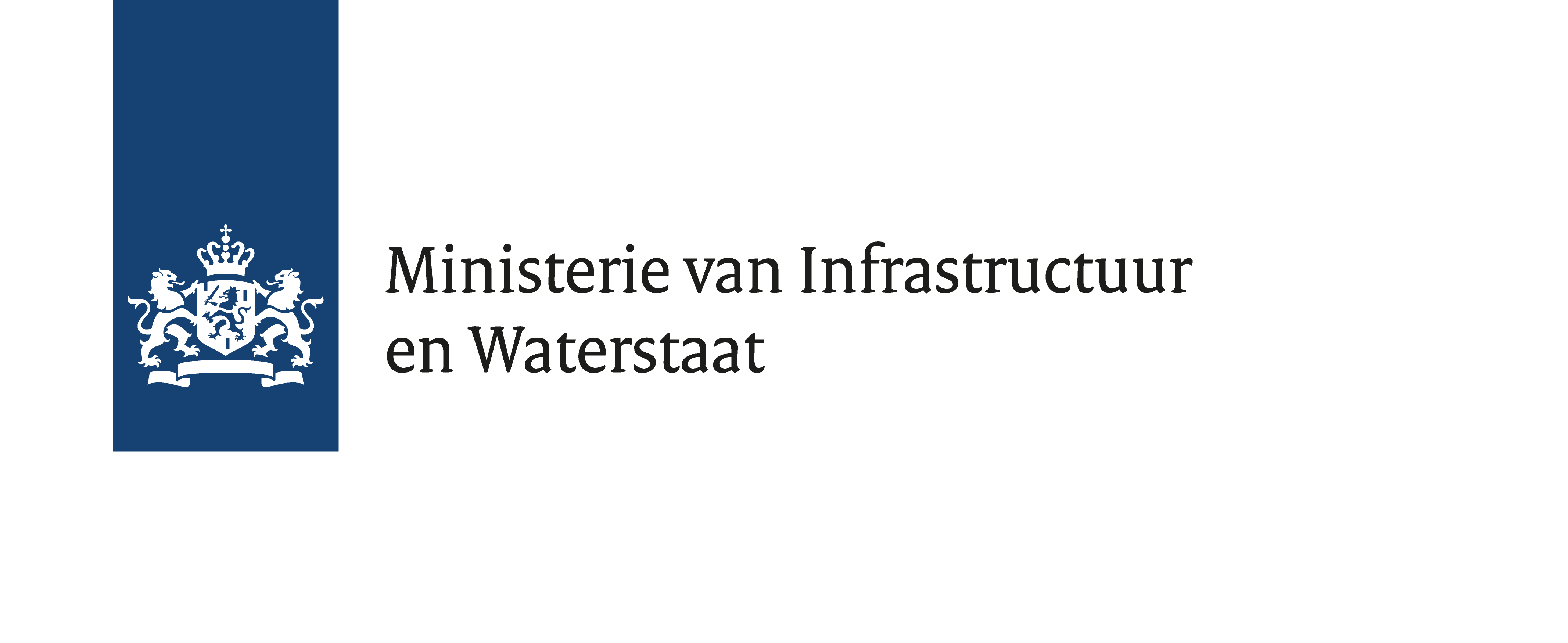
In this fact sheet the focus is on working-with-nature solutions for the beneficial re-use of dredged material. A working-with-nature solution for the beneficial reuse of sediment is a solution whereby the sediment or dredged material is used locally, preferable in the system, and use is made of natural processes to distribute the sediment (tides, waves etc.) or to trap additional sediment (reed, oysters etc). When we can realize these sustainable solutions, sediment is experienced as a (local) resource instead of a threat. A win-win solution with costs savings, reduction in CO2 and where possible nature development is obtained.
N.B. In this Delta Fact we use ‘sediment’ and ‘dredged material’ interchangeably.
Related topics and delta facts
Key words: Dredged material, Sand Nourishment, Managed Realignment
Related Delta Facts: Sand Nourishment, Managed Realignment
Strategy: working with nature
Working-with-nature is an approach in which optimal use is made of natural dynamics such as wind, water, sediment and vegetation and may lead to a positive effect on nature. Working with Nature solutions contribute to multifunctional land use, for example: nature development, flood risk management, fresh water supply, fisheries, recreation and infrastructure. Typical Dutch examples of working with nature are: the ‘Room for the river’ project (also see this Delta Fact) and the Sand Engine (see Delta Fact Sand Nourishment).
The use of natural dynamic leads to solutions which are more flexible than hard structures and are more adaptable to changing, natural or socio-economic circumstances. Thereby these natural solutions are better able to adjust to our ever changing environment. This is particularly important in the light of climate change and increasing populations in Delta areas. Therefore working with nature solutions require adaptive pathways for decision-making and an adaptive governance approach to facilitate implementation and maintenance of the working-with-nature solutions. Adaptive pathways include the use of multiple scenarios on future socio-economic and physical developments (e.g. climate change or land-use) and possible actions. An adaptive governance approach includes principles of continuous and collective learning to include new insights and knowledge, a participatory monitoring program, wide participation of stakeholders, and a continues process of reflexive decision-making. This is contrary to more conventional approaches where after implementation projects are finished. The dynamic and unpredictable character of working with nature solutions, require a continuous process of decision-making.
Similar concepts to working with nature used are ‘building with nature’, ‘eco-engineering’, ‘ecological enhancement’ and other.
Schematic
This Delta Fact describes five types of beneficial re-use of dredged material. These types of measures meet the conditions of local use of dredged material and the use of natural processes (tides, waves, geochemical and geophysical processes etc.). An overview is provided in the table below.
| Types of beneficial re-use of dredged material for: | Description of the measure | Examples |
| A. Sustainable relocation in the estuary | Dredged material is re-placed in the estuary by means of natural processes (tides, currents, sediment transport) the sediment is distributed to the intertidal mudflats and salt marshes. This way the necessary deepening of the shipping channels is combined with enhancing the natural value of the estuary, while keeping transport costs of the dredged material low because of local re-use. | Western Scheldt, NL Waddensea, NL Mersey Estuary, UK Lower Orwell, UK In-Harbour placement, Poole, UK |
| B. Erosion control by salt marsh and foreshore replenishment | Dredged material is placed directly on the foreshore, enhancing salt marshes’ ability to act as a buffer against wave energy. | Lake IJsssel, NL Lymington, UK Horsey Island, UK Eastern Scheldt, NL |
| C. Erosion control by beach nourishment | Dredged material is placed directly on the beach to support the natural wave attenuation function. | Poole, UK Horsey Island, UK |
| D. Riverbank erosion control by reed bed reinstatement | Geotubes, filled with dredged material, are placed to protect riverbanks again erosion. Locally-sourced reed is planted in or behind the geotubes (and/or by natural growth). The reed reduces wave energy and protects the river banks, while at the same time trapping sediment, thereby further strengthening the river banks while lowering the sediment reflux to the river. | Salhouse Broad, UK Duck Broad ,UK Ringvaart Haarlemmer meer (NL) |
| E. Ripening of dredged material | Ripening of dredged material is a natural dewatering or ’drying' process. Raw dredged material transforms into soil influenced by chemical and physical processes. The aim of ripening is to obtain clay or soil which complies with environmental legislations and geotechnical specifications for application in earthworks (e.g. dikes, noise reduction banks, landfill covers). Ripening is applied in rural areas on a small scale and mainly for clean or lightly contaminated dredged material from regional waterways. The obtained clay or soil is locally used to raise the land. | Many agricultural fields, forelands, NL |
Technical characteristics
Sediment
Sediment originates in the catchments through erosion processes and is transported in rivers into the direction of the sea and coast. In the estuarine zone most of the river borne sediment is deposited, and only a relatively small proportion of the fine sediment load reaches the open coastal zone, where it eventually settles.
In estuaries with large tides, this balance of sediments is reversed and there is a net deposition of material in the waterways and harbors originating from coastal and marine erosion. These net deposition results in major dredging activities aimed at continuing access of the waterways for shipping.
In many waterways and harbors there is too much sediment, while on the other hand there are several problems in the estuary caused by a shortage of sediment supply. Some of the problems which require sand nourishment or managed realignment as a solution are caused by a lack of sediment supply. This lack of supply may be caused by natural change, but in many cases man-made changes to the system cause the problem. Examples of this are control structures: groynes and breakwaters that interfere with the natural transport of sediment, as do dams, weirs, locks and other impounding structures (Jan Brooke, 2013).
In the table below an overview is given of the effects that occur as a result of too much or too little sediment in the estuary and how the superfluous sediment can be re-used in areas with a sediment shortage.
| Too much sediment | Too little sediment | Beneficial re-use in cases of sediment shortage |
| Obstruction of waterways | River profile degradation | Sustainable relocation in the estuary |
| Clog of harbors | Wetlands are lost | Salt marshes replenishment |
| Rivers fill and flood | Beaches erode | Beach nourishment |
| Reefs get smothered | Riverbanks erode | Riverbank erosion control |
Beneficial re-use of sediment
Beneficial re-use of dredged material aims at the improvement or enhancement of river and coastal protection and sustainable relocation of sediment in the estuary. Instead of using “new” building material or sand from sandpits, the local excess of dredged material is being used beneficial on local scale to enhance the resilience of the estuary, river banks or the coasts.
Dredged material needs to be tested for contamination. In case of contamination the material needs to be processed in dredging pits before use. The last couple of decade’s contamination of dredged material reduced significantly, thereby making it an interesting material for re-use.
Dredged material may be directly applied or may need further processing before application, depending on the material type and purpose of use. Sandy or coarser material can be used directly, but fine sediment (silt) with high organic matter is unstable. When used for construction this material requires ripening first.
Pilots project are now drafted to improve the ripening process so also soft material can be re-used more efficiently (MHWaterzaken 2013). Executing this locally, while using the properties of the natural system, might be a promising alternative.
An alternative for ripening is dredging directly under a soft top layer. This can be done by dumping back the material of the top layer after dredging the sandy material. An alternative method is the innovative suction technology BeauDredge®. BeauDredge® keeps the (useless) top layer in place, while the overall bottom level of a channel or lake will be lowered and high valued sediment is be obtained (van der Linde et. al. 2005). The added benefit of this technique is that the bed remains intact and undisturbed.
Governance
Legislation for handling dredged material is complex as it is at the borderline of water, soil and waste policies. The legislation is under development. Several European regulatory frameworks such as the EU Landfill Directive, the EU Waste Framework Directive and the EU Water Framework Directive are currently being implemented. Deregulation on a national level and harmonization on a European level are needed to arrive at an adequate and less complex legislative framework (Köthe and de Boer, 2003).
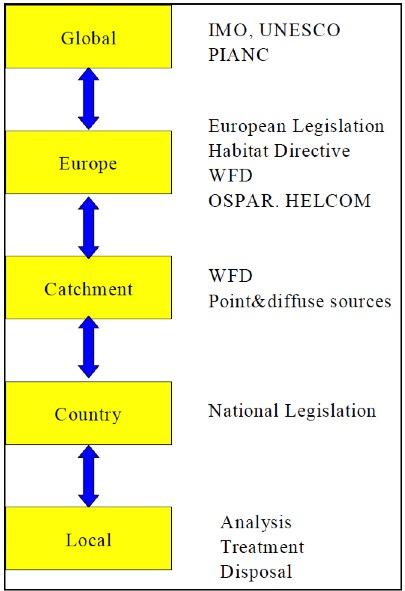
Legislation affecting the management of dredged material operates at different scales (see figure below, source: Sednet, 2004). On the local level managers are responsible for maintenance and safety (port authorities) and deal with analysis, treatment and disposal aspects of sediments. Each country has its own national legislation (e.g. the “soil quality decree” in the Netherlands). The Water Framework Directive crosses borders and requires the development and implementation of an integrated system of water protection, improvement and sustainable use covering the whole catchments area of rivers. To achieve Natura 2000 aims, working with nature solutions can contribute (Rijkswaterstaat et al., 2012).
The EU Water Framework Directive (WFD) requires EU member States to develop and implement an integrated system of water
protection, improvement and sustainable use. The directive applies to all groundwater and surface water bodies including estuaries and coastal waters, and artificial water bodies such as docks and canals (Sednet, 2009). It seems that the implementation of the WFD will shift the scope from local sediment management to river scale sediment management. Sednet considers this is a prerequisite for sustainable sediment management. River scale sediment management fosters developments towards sustainable sediment management such as the transition from hazard to risk based management and stakeholder involvement (Sednet, 2004).
Fear of contamination and environmental risks leads to a “not in my back yard” (NIMBY) attitude with stakeholders. This attitude can be overcome by: explaining policy; listening to stakeholders; paying attention to actual environmental risks; developing programs that raise awareness amongst stakeholders and government agencies; and by involving stakeholders at an early stage of the project (International Association of Dredging Companies, 2009). Pilot projects of beneficial re-use are a good alternative to start implementation of proposed solutions. Applications can be tested and pilots can help to overcome barriers which are inherent in innovative approaches. Furthermore, executing a pilot enables learning lessons on stakeholder involvement and dealing with legislation.
The re-use of dredged material is a matter of matching supply and demand of the material. While this is considered the crucial aspect the approach, at the same time it is the main challenge. It requires connecting and integrating the worlds of the supply and the demand. Institutional fragmentation has to be dealt with and sectoral and mono-functional approaches have to be replaced in order to enable the matching of the amount, type and time of sediments. Cooperation, a collective organization, approaches of learning, co-production of knowledge and adaptive management can help to achieve this.
Costs and benefits
Costs
The costs of re-use of dredged material are highly variable and depend largely on the type of sediment supplied and required. When very coarse material is present this can either be used directly for construction locally or be sold with profit, which will help projects financially. When fine sediment with a high percentage of organic matter is used, often this material will need to ripen first. This not only requires time but also space. In any case, costs are also determined by the way of contractor involvement. When contractors are allowed more flexibility in organizing both the dredging activities and disposal of the material, the type of material for dredging and constructing can be matched optimally, lowering the costs of the overall project.
Benefits
The benefits are more general for all sediment types.
Sediment as resource: When beneficial re-use of dredged material is applied, dredged material is used as a resource instead of a waste. When using the sediment for an eco-engineering solution such as enhancing salt marshes or strengthening dikes by creating foreshores these solutions will not only be cost effective due to the re-use of local material, also the area of natural habitats is increased which potentially leads to an increase in biodiversity. As a result Natura 2000 requirements can more easily be met. Therefore these eco-engineering solutions are sustainable alternatives approaches to hard engineering solutions.
Potential cost savings: Sustainable relocation or application of the dredged material may save money compared to cost of disposal to sea, which can be more than 20 km offshore. Matching the availability of the resource (the dredged material) with the demand is an important condition.
Opportunities for CO2 savings: Reduced carbon emission is gained due to reduced transport distances for disposal. Also carbon savings are gained by the capturing of carbon in salt marshes or reed beds.
Additional benefits: Additional benefits depend on the use of the sediment. Dredged material can be used to supplement and enhance salt marshes, reed beds, beach or riverbank (functioning as flood protection measures, by dissipating wave energy). Thereby it reduces vulnerability and improves resilience of these flood protection measures. This is in particular important with regard to uncertain future effects of climate change, such as extreme storm events or sea level rise. Additionally, when sediment is used to create foreshores or reed beds, these solutions hold a higher natural value compared to traditional engineering solutions. This is valued higher by stakeholders, making implementation of the re-use of the sediment easier.
Lessons learned and ongoing study
Coarse dredged material is already being re-used for several purposes and thus a more common practice. Re-use of soft material is less common. Below we discuss lessons learned and ongoing study in particular for the beneficial re-use of soft dredged material.
Lessons learned
Soft sediment needs processing before it can be used for construction purposes. In the 90’s a lot of research has focused on the re-use of soft dredged material. Among others it was used for creating bricks. However, most applications of the soft dredged material required intensive processing and were found to be too expensive. Therefore none of the possible applications was upscaled. Nowadays, soft dredged material is first ripened and then used for constructing roads and dikes. However, the ripening process is still relatively expensive and can be improved. Since dredged material is low value bulk material, it should be handled as such. We learned from the research in the 90’s that high-tech applications are simply too expensive, therefore low-tech solutions and local use will be most beneficial to use soft dredged material in a cost effective way.
An example of use of soft sediment in a cost effective way is using it for the elevation of meadows. When dredged material is placed on a meadow nearby, this counteracts subsidence while at the same time preventing CO2 release as a result of saving on (shipping) transport of the material (Baggernet 2011).
From experience of the re-use of dredged material in the Netherlands, it was found that when sediment is used as a resource for construction, costs may be lowered when the contractor can be flexible in their timing of construction. This means that the contractor gets the opportunity to combine projects and activities in the most efficient way. Providing flexibility to contractors requires new ways of contracting where less is fixed beforehand.
An important lesson on the governance of beneficial re-use relates to the involvement of stakeholders. Sediments are a natural and essential part of the aquatic environment. However, often it is perceived as a hazard. Beneficial re-use requires changing the mindset from seeing this sediment as a hazard to seeing it as a resource. Early communication about planned activities and involving stakeholders in an early stage has proved to help in raising public support.
Ongoing study
When used for construction purposes, sediment requires multiple years of ripening. Studies are devoted to optimization of the ripening process or finding alternative methods to use soft dredged material.
A new initiative to use soft dredged material is to combine dredging of a river with subsidence reversal on land. The idea is to mix dredged material with the peat soil present on land. Placing the dredged material on top of the peat soil would increase the weight of the soil, thereby enhancing subsidence. By mixing the dredged material with the soil present, increase of the the weight of the top soil will be prevented while the land is raised. When this is executed locally it will decrease the costs of shipping of the dredged material, which would otherwise be disposed of. Also subsidence will be reversed while the river is being maintained (MHWaterzaken 2013).
In Lake Markermeer, the high concentration of fine sediment is a problem for both shipping and the ecological value of the lake. Plans are drafted to create small islands, the Markerwadden, in the lake using the dredged material from the shipping lanes. This will increase the natural value of the system by creating breeding habitats for numerous birds, while stabilizing a high amount of silt. In addition it will decrease the return flow of the silt and thereby the amount that needs to be dredged on the long term (Boderie, 2010; Natuurmonumenten, 2012).
In de Waddenzee ongoing research is focusing on the re-use of dredged material from the harbors in the intertidal area to dispose of material locally while enhancing the natural value of the system.
Ongoing study is devoted to the development of business cases for beneficial re-use of dredged material. Developing feasible business cases is an important prerequisite for implementation of the approach. Within the European climate KIC program business opportunities are explored for several coastal and riverine working with nature solutions, among which beneficial re-use. First insights are generated and can be found in an exploratory report. The development of business cases is subject to further study. (more information: http://www.climate-kic.org/news/report-business-opportunities-for-sustainable-coastal-and-river-engineering/)
Knowledge gaps
Since coarse materials are more widely re-used, the knowledge gaps mostly concern questions about soft dredged material and stakeholder involvement. In addition, beneficial re-use of sediments often needs further experimentation and pilot-applications before it can proceed to actual implementation.
Geochemical and (micro-) biological processes are natural processes underlying the ripening process. However the optimal use and interaction between these processes is only limited understood. Research and experiments are needed to further understand these processes for improvement and accelerating ripening. This knowledge will improve understanding of the impact of geotechnical characteristics of sediment in the ripening process and may lead to innovative technologies.
In the Westerschelde, flexible use of dredged material is applied (see experience section below). Transferring this technique to other locations is desired, but is only possible when boundary conditions are met. Knowledge of these boundary conditions, the stability of the different types of sediment under different hydrodynamic conditions, is needed and also system knowledge of other estuaries and especially detailed hydrodynamic conditions is therefore essential to apply this method elsewhere.
(Early) involvement of stakeholders contributes to generating public support for the beneficial re-use. In addition a participatory approach may yield in the development of a supported knowledge base to which stakeholders have contributed. One of the main challenges is linking different stakeholders across institutional levels and sectors which is required to match demand and supply. A second important challenge is matching demand and supply in terms of time. Dredged material is available at a certain moment in time and ideally it is directly transferred to its application.
Methods for evaluating the societal benefit of using sediment in the estuary system need to be developed. These benefits can be compared to using traditional solutions for flood protection.
Experiences
Sustainable relocation: Scheldt Estuary Flexible Placement of Dredged Sediment (NL)
To maintain the depth of the channels for transport to the Port of Antwerp, annually 11.6 Mm3 is dredged from the main channels of the Scheldt Estuary. The material is then re-placed within the estuary on the edges of tidal flats, in smaller channels or in other locations of the main channels. The replacements on the tidal flats help to supply sediment to the mudflats and salt marshes in the Estuary. Natural processes (tides, currents, sediment transport) distribute the sediment to intertidal areas. By ensuring sediment supply to these habitats contributes to the natural value of the system in which the surface area of intertidal areas decreased over the last decades (Deltares, 2012). Moreover, placement of sediment in morphologically stable locations will lower the return flow and thereby decrease the amount of sediment that has to be dredged in the future (Min V&W 2007).
Sustainable relocation recognizes the role of sediments in the natural system and regards dredged sediment as a resource. The salt marsh carbon sink is protected and there are carbon savings due to reduced transport distances for disposal.
Sustainable relocation of dredged material in Scheldt Estuary has started in 2010 and saves money compared to cost of disposal to sea and supports enhanced longevity of the protected natural habitats and continued provision of ecosystem services. This approach of using dredged material for the expansion of valuable intertidal area is new and provides a win-win situation as it lowers the cost of maintenance while conserving nature (Min V&W 2007).
This solution might be interesting for other ports/navigation authorities interested in a sustainable and cost-effective option for the re-use of dredged material.
Sustainable relocation of dredged material in the estuary itself is also practiced in the Mersey Estuary, England.
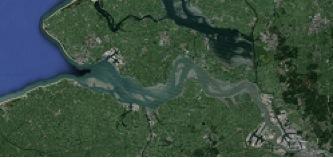
Figure 1. The Western Scheldt with many tidal flats is the main shipping route to the port of Antwerp (right lower corner). The depth of the main shipping channel is maintained by dredging. Part of this dredged material is then replaced to the tidal flats in order to enhance the natural value of the system (source: Google Maps).
Erosion control by foreshore construction: Lake IJssel (Zachte zandmotor, NL)
In the North of the Netherlands there are plans to heighten the water level of lake IJssel. By means of this measure the lake can function as a retention area during periods of increased rainfall and water runoff by rivers and as a fresh water buffer during dry periods. Water level heightening requires strengthening of the dikes, without compromising their historic value. A possible method is creating foreshores. Foreshores lower the wave-energy on the dikes and improve their stability. Foreshores will also increase the natural value of the area as it can serve as breeding ground for birds. At the same time, sediment needed to be dredged from nearby harbors (Hindeloopen en Workum) to maintain a safe navigable depth. This demand (foreshores) and supply (of the harbor) were matched. The dredged material was used to create the foreshore, which reduces the vulnerability against flooding and improves the natural value of the area (Arcadis, 2011).
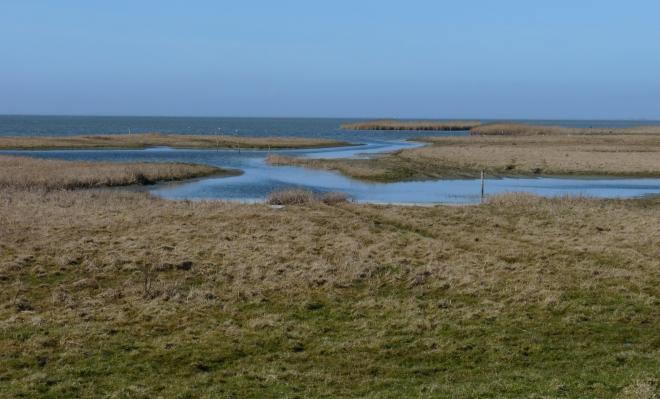
Figure 2. The natural foreshore in Lake IJssel, protecting the dikes against high wave action. The dredged material of nearby harbour maintenance was used.
The dredged material is not disposed as a waste, but it is used as a resource. Instead of relying only on a hard engineering solution, the natural functions of the foreshore (a buffer against wave energy and a sink for carbon) are being restored.
The benefits of using dredged material for foreshores are: the sustainable re-use of ‘waste’; erosion control; ecological and ecosystem gains; reduced carbon emissions; and cost savings compared to the transport of dredged material for disposal.
Costs of this project were further lower by placing the dredged sediment in front on the dikes, leaving it to wind and water current to further disperse the sand. The foreshores were naturally created by making use of the natural forces (Arcadis, 2011).
Erosion control by beach Nourishment; Case: Poole Harbour Beach Nourishment with Dredged material (UK)
Between 1989 and 2006, approximately 3 million cubic meters of capital dredged material was dredged from a major navigation channel deepening project. The material was placed on the beaches of Poole, Swanage and Bournemouth. Opportunities are sought to place material on beaches whenever practicable and cost-effective. The placed material supports the natural beach function, reduces erosion and protects the coastline against storm damage. In addition there are carbon savings compared to transporting dredged material offshore for disposal and transporting commercially extracted sand for beach nourishment.

Figure 3. Before and after: beach nourishment using dredged sediment from the deepening of the navigation channel in Poole Harbor
The benefits of these nourishments of dredged material are the cost savings and the sustaining of the local economy through ensuring the quality of beaches as a recreation and tourism resource.
Riverbank erosion control by reed bed reinstatement; Case: Salhouse Spit Restoration (UK)
Dredging and disposal of sediment poses some unique challenges in the ecologically protected Norfolk Broads. This multi-objective project provides a win-win solution: using dredged material beneficially solving a river bank erosion problem helping to restore 7,000m3 of reed-bed, a declining, nationally important habitat. Dredged material was retained within four geotextile bags filled with solid sediment using a concrete pump, underwater. The bags were planted with locally-sourced reed (Brooke, 2013).
The benefits of erosion control by reed bed reinstatement are a local, beneficial reuse of dredged material. Reed beds both provide effective natural control against river bank erosion and valuable habitat. Riverbank erosion control by reed bed reinstatement might be potential applications in all low lying, sediment-rich areas with dredging requirements and riverbank erosion issues.
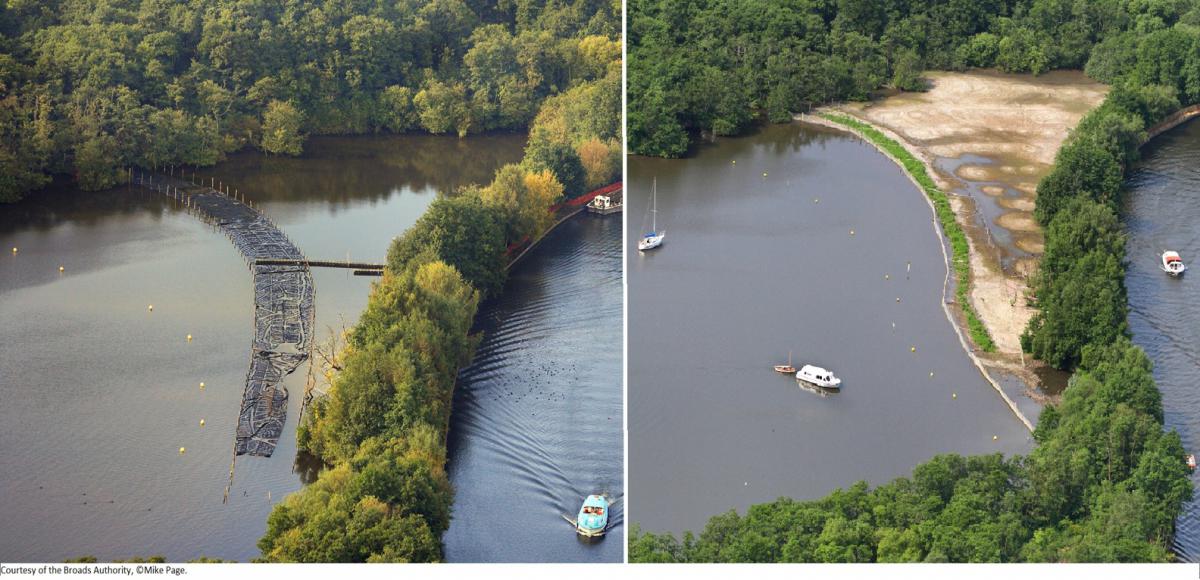
Figure 4. Salhouse Spit (i) eroded area showing line of geotextile bags and (ii) after placement of dredged sediment

 English resume
English resume